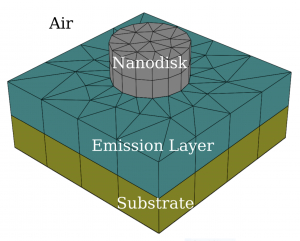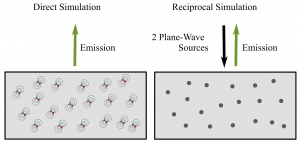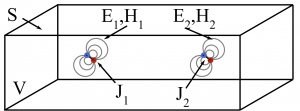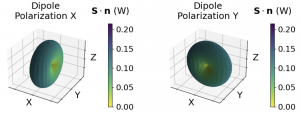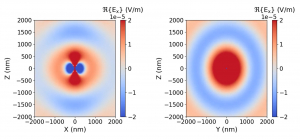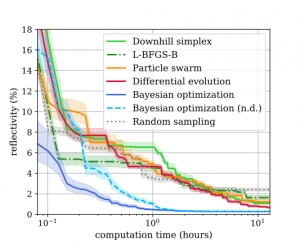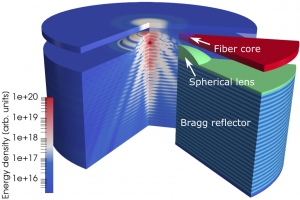Displaying items by tag: quantum optics
Published in 2022
Published in 2022
Published in 2021
Published in 2020
Published in 2020
Published in 2018
This post continues the series on modelling point dipole sources using reciprocity. It shows a concrete example of an ensemble of dipole emitters near a periodic nanostructure, which highlights the computational advantage of exploiting the receprocity theorem.
Published in Blog
This post continues the series on modelling point dipole sources. This post extends the application of the reciprocity theorem to dipoles separated by a large distance. Furthermore, the benefits of the use of the reciprocity principle are discussed.
Published in Blog
Tagged under
This post continues the series on modelling point dipole sources by discussing the application of the reciprocity principle to dipoles. In this post, the concept of reciprocity is introduced and applied to the near-fields of dipoles.
Published in Blog
Tagged under
This is the second part of a series on dipoles. This post discusses how to evaluate the electromagnetic fields far away from the source. This is useful when modelling the spatial or angular distribution of light on a detector at a large distance form the source.
Published in Blog
Tagged under
Electric point dipole sources are, along with plane waves, one of the most commonly used sources types in electromagnetic computations. This first post on electric dipoles discusses their near-field properties both from both analytical expressions and numerical simulations in JCMsuite.
Published in Blog
Tagged under
This blog post is based on the publication P.-I. Schneider, et al. Benchmarking five global optimization approaches for nano-optical shape optimization and parameter reconstruction.ACS Photonics 6, 2726 (2019). Several global optimization methods for three typical nano-optical optimization problems are benchmarked: particle swarm optimization, differential evolution, and Bayesian optimization as well as multistart versions of downhill simplex optimization and the limited-memory Broydenu2013Fletcheru2013Goldfarbu2013Shanno (L-BFGS) algorithm. In the shown examples, Bayesian optimization, mainly known from machine learning applications, obtains significantly better results in a fraction of the run times of the other optimization methods.
Published in Blog
Tagged under
This blog post is based on the publication P.-I. Schneider, et al. Numerical optimization of the extraction efficiency of a quantum-dot based single-photon emitter into a single-mode fiber. Opt. Express 26, 8479 (2018). The publication introduces a finite-element method for the accurate and efficient simulation of strongly localized light sources, such as quantum dots, embedded in dielectric micro-optical structures. The method is applied in order to optimize the photon extraction efficiency of a single-photon emitter and to study the robustness of the extraction efficiency with respect to fabrication errors and defects.
Published in Blog
Tagged under

